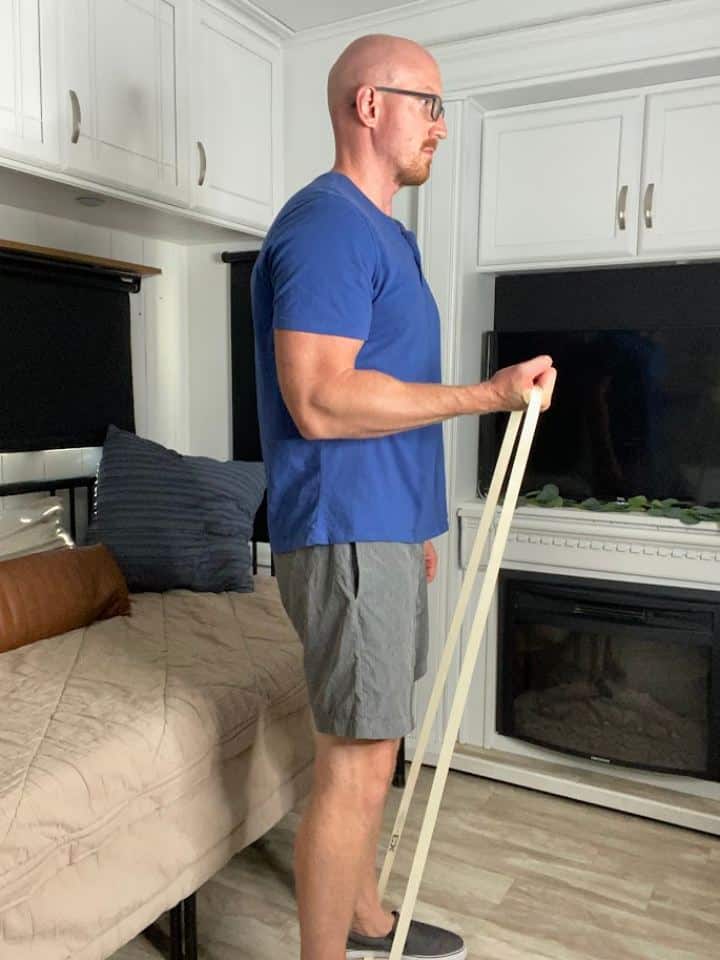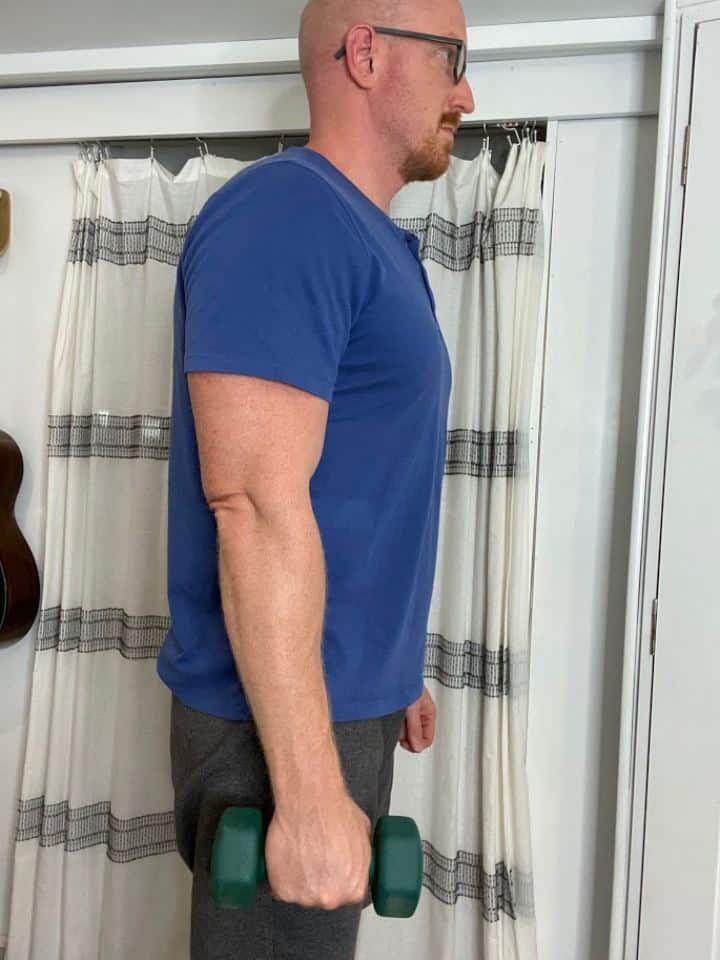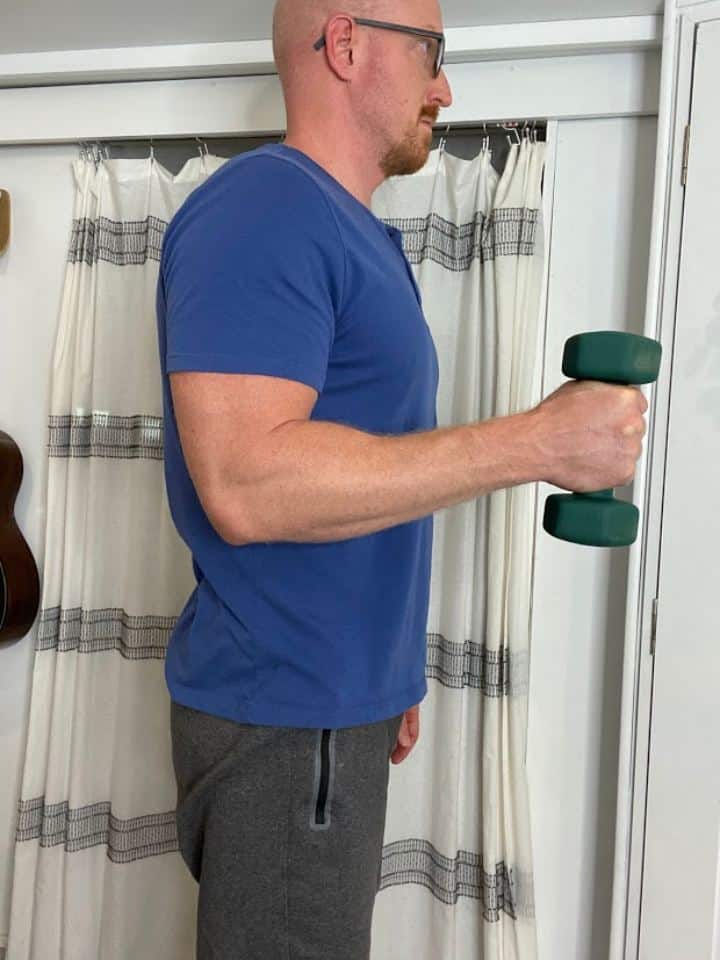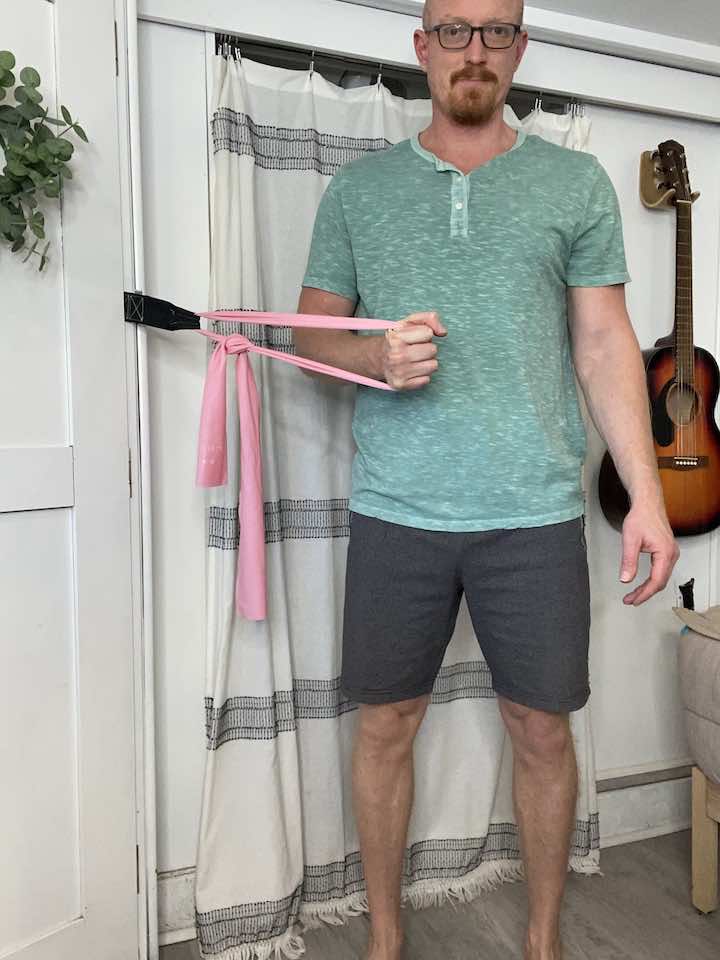Free download: Top 10 Natural & Easy Remedies for Joint Pain from Home. Learn these helpful remedies.
Estimated Reading Time: 8 minutes read
Ah, the golden years! The perfect time for relaxation, seeing the world, and making memories with our loved ones. But let’s not forget to take care of ourselves and stay on our toes. One sneaky issue that can pop up as we age is biceps tendonitis. So, get cozy with a cuppa, and let’s chat about biceps tendonitis and how to tackle it. Don’t worry, my experienced pals, I’ll walk you through some simple, helpful exercises to help you beat this pesky problem.
Biceps tendonitis is when the tendons connecting your biceps muscle to your shoulder get a bit grumpy and inflamed. This can lead to pain, weakness, and inability to move your shoulder and arm as much as you’d like. But, with some tender loving care and a sprinkle of hard work (wink, wink), you’ll be back to feeling great in no time.
In this article, we’ll discuss what causes this problem, what it feels like, and why doing exercises can help. We’ll go over six different exercises made just for biceps tendonitis. They’ll help you focus on the right spot and get you feeling strong and flexible again. And don’t worry; I’ll keep it light and easy to understand, so even if you’ve never been a gym-goer, you’ll be fine following along.
So, whether you’re in your favorite exercise outfit (or even your cozy PJs), let’s jump in and work together toward a happier, healthier you!
Table of Contents
Causes of Biceps Tendonitis
You might be thinking, “How on Earth did I end up with this biceps tendonitis? I’m just minding my own business, enjoying life!” Well, dear friend, let’s dive into some reasons that might’ve led to this situation.
Biceps tendonitis often shows up due to the wear and tear from doing the same overhead tasks over and over. It’s no shocker that people who play sports like tennis, swimming, or baseball might be more likely to get it.
But it’s not just about sports! Everyday tasks like painting or carrying heavy things can also cause tendonitis. Age plays a big part too, as our tendons get a little less bendy and more prone to getting hurt as time goes by. You know what they say: age comes with a few extra surprises!
Symptoms of Biceps Tendonitis
So, how do you know if you’re dealing with biceps tendonitis? Here are some of the tell-tale signs:
- Pain and Tenderness: You might feel pain at the front of your shoulder, which may worsen when lifting your arm or performing overhead activities.
- Weakness: You may notice a decreased strength in your affected arm, making it difficult to carry out everyday tasks.
- Limited Range of Motion: Biceps tendonitis can make it challenging to move your arm freely, especially when trying to reach overhead or behind your back.
- Clicking or Popping Sounds: Sometimes, you may hear a clicking or popping sound when moving your shoulder.
If you’re experiencing any of these symptoms, it’s essential to consult a healthcare professional to get a proper diagnosis and treatment plan.
The Fun Part: Benefits of Exercising
Now that we’ve covered the causes and symptoms of biceps tendonitis, let’s discuss the fun part – the perks of exercising! These exercises won’t just help you with your tendonitis, but they also come with a bunch of other bonuses. It’s like getting a buy-one-get-one-free offer for your health and happiness!
Working out regularly can lift your spirits, help you keep a healthy weight, give you more energy, and even lower the chances of long-term health issues. Plus, it’s a fantastic way to hang out with friends, join clubs or groups, and stay involved in your community. So, don’t be shy – lace up your sneakers and get moving! Always remember age is only a number, and it’s never too late to start exercising.
Now, let’s jump into the exercises made to help you with your biceps tendonitis!
6 Exercises & Stretches to Combat Biceps Tendonitis
Exercise 1: Cross-Friction Massage


A great way to start is with a simple cross-friction massage. This technique helps increase blood flow to the tendon, promoting healing and reducing inflammation. Here’s how you do it:
- Position the fingertips of your unaffected arm on the painful shoulder’s front area where you feel pain.
- Apply pressure and gently move your fingers back and forth in a horizontal direction.
- Note that this may cause discomfort but helps the tendon heal.
- Perform 30 sec-1 min of massage once a day.
- It’s best to do this after completing your exercises and at the end of your day when you can rest your shoulder.
Exercise 2: Bicep Curls


Bicep curls are a classic exercise that can help strengthen your biceps and aid in your tendonitis recovery. Remember, we’re focusing on eccentric strengthening, so take it slow when lowering the weight. Here’s how:
- Stand with both your feet in the middle of the resistance band, holding one end of the band in one hand.
- Keep your arms straight and by your sides, with your palms facing forward.
- Slowly bend your elbow, bringing your hands towards your shoulders while keeping your elbows close to your sides.
- Hold a moment, then slowly straighten your arms to return to the starting position.
- Repeat the movement for 8 repetitions, then switch to the other arm.
- Aim for 3 sets of this exercise.
Exercise 3: Hammer Curls


Hammer curls are another excellent strengthening exercise that targets the biceps and helps alleviate tendonitis. Just like with the bicep curls, we’ll focus on eccentric strengthening.
- Hold a weight in each hand, with your palms facing your body and your arms extended down by your sides.
- Slowly bend your elbow, curling your forearm towards your upper arm while keeping your upper arm stationary.
- Pause for a moment at the top of the movement.
- Slowly lower your forearm back down to the starting position.
- Repeat this movement for 10 repetitions for 2-3 sets.
Exercise 4: Bicep Stretch Using a Wall


Stretching is essential for maintaining flexibility and preventing injury. This bicep stretch will help improve your range of motion and alleviate discomfort.
- Stand next to a wall, with your affected arm closest to it.
- Extend your arm behind you and place your palm flat against the wall.
- Slowly rotate your body away from the wall until you feel a gentle stretch in your bicep.
- Hold this position for 30 seconds.
- Release and repeat the stretch 2 more times for a total of 3 repetitions.
Exercise 5: Shoulder Internal Rotation with Resistance Band


This exercise targets the muscles responsible for the internal rotation of the shoulder, helping to strengthen and stabilize the joint. A resistance band is a great tool for this exercise, as it provides gentle yet effective resistance.
- To perform this exercise, you will need to attach one end of the band to a secure location, such as a doorknob or post, at the height of your elbow to perform the correct motion.
- Keeping an upright posture, slowly pull the band towards your stomach while maintaining the 90-degree angle of your elbow.
- Hold for 2 seconds, then return to your starting position.
- Repeat the movement for 10 repetitions, then switch to the other arm.
- Aim for 3 sets of this exercise.
Exercise 6: Shoulder External Rotation with Resistance Band


The final exercise targets the muscles responsible for the external rotation of the shoulder, further promoting strength and stability.
- Attach one end of the resistance band to a secure location, such as a doorknob or post, at the height of your elbow to perform the correct motion.
- Stand facing the band and hold the other end with your hand on the same side, elbow bent at a 90-degree angle and tucked by your side, and palm facing towards your body.
- Keeping an upright posture, slowly pull the band away from your body, rotating your arm outward and away from your torso while maintaining the 90-degree angle of your elbow.
- Hold this position for 2 seconds, then return to your starting position.
- Repeat the movement for 10 repetitions, then switch to the other arm.
- Aim for 3 sets of this exercise.
Conclusion
And there you go, buddy! Six easy-peasy exercises & stretches to help you handle your biceps tendonitis and get back to living it up in your golden years. Keep in mind, sticking with it is the secret sauce, so be sure to add these exercises to your daily routine.
If you’re unsure about any exercises or feel any pain, chat with a healthcare professional for some advice. With a pinch of patience, a dash of determination, and a spoonful of humor, you’ll be on your way to a happier, healthier, and more active life. So, let’s toast with a cup of tea to your triumph and get moving! Bottoms up!














